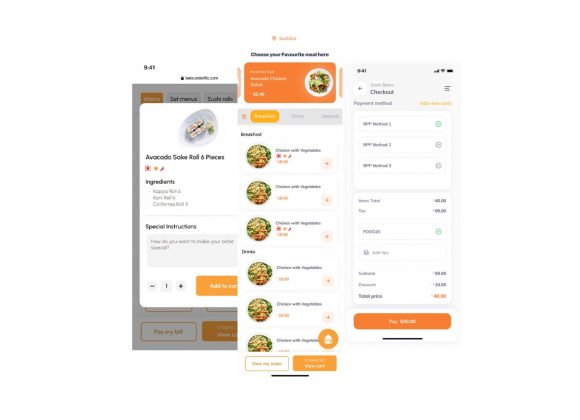
FOOD ALLERGENS, WHAT ARE THEY ALL ABOUT?
Our bodies have a very intuitive immune system. It is excellently designed to keep away all forms of harmful germs and viruses from affecting our body. However, sometimes what happens is that our body mistakes certain foods as harmful. These are called food allergens.
Since the body sees these foods as harmful, it releases chemicals such as histamine which causes inflammation. The tricky part is that if you’re allergic to a certain food, consuming even small amounts of it can be dangerous. The overreaction of the body to food allergens is such that it can be life-threatening to some.
Family history plays a role in identifying food allergies. They can be identified at a young age or sometimes even develop over time. In just the United states around 32 million people are reported to have some or the other kind of food allergy. And each year around 200,000 people seek emergency medical care due to allergic reactions to food.
AM I JUST INTOLERANT OR DO I HAVE A FOOD ALLERGY?
This is a common question among people. The consequence of food allergy can range from mild discomfort to serious reactions that are life-threatening. Intolerance and allergies may have similar physical symptoms but they are surely not the same thing.
Intolerance towards a particular food type is simply a digestive issue. It just doesn’t sit right with your stomach, so avoid it. On the other hand, a food allergy triggers the immune system which is much more serious. The immune system goes into an abnormal protective mode and causes reactions that can be fatal if not treated in a timely manner.
With food intolerance you may be able to eat very small amounts of that particular food and get away with it. But if you are allergic to that food, even small amounts of it can cause problems.
So if you are still uncertain about it, notice how your body reacts and make sure to consult a doctor. Food allergy must not be taken lightly.
SOME COMMON FOOD ALLERGY SYMPTOMS
As mentioned before, the symptoms of a food allergy and intolerance towards certain food types might be similar. But a doctor must be consulted to ensure allergies. Here are some of the most common food allergy symptoms :
- Swelling in certain parts of the body (face, mouth, throat etc.)
- Congestion or trouble breathing
- Abdominal pain
- Nausea
- Vomiting
One very aggressive symptom of an allergic reaction is anaphylaxis. It is vital that you seek immediate medical attention if you notice any of the following symptoms :
- Constricted airways due to swelling in throat
- Dizziness and loss of consciousness
- Rapid pulse
- Anaphylactic shock (due to extremely low blood pressure)
According to a study conducted by SingleCare in 2021, 82% of the respondents with allergies reported that this affected their quality of life. 14% of these respondents have also experienced hospitalization due to an allergic reaction.
Food allergies must not be taken for granted.
MOST COMMON FOOD ALLERGENS
Reports suggest that there are about 170 foods that trigger allergic reactions. However, the Food Allergen Labeling and Consumer Protection Act of 2004 (FALCPA) has recognized 8 most common food allergens. These 8 allergens account for 90% of the food allergic reactions in the United States.
Number 1: MILK
Milk is the most common food allergen found in children. Reports suggest that 2.5% of children under that age of 3 are allergic to milk. Most children tend to outgrow this allergy to milk. Adults generally are not allergic to milk.
If you’re allergic to milk, you’ll start showing symptoms within 5 to 30 minutes. So be watchful. Lactose intolerance and milk allergy is not the same thing.
Number 2: EGGS
Another allergen found mostly in children. They tend to outgrow it by the age of 16, but some do not. Sometimes people with egg allergy can have eggs that are fully cooked because heat changes the shape of the allergy causing proteins.
Some people are allergic to the proteins in egg whites and some to the proteins in the yoke. But if you have an egg allergy, it is best to avoid eggs completely and opt for an egg-free diet.
Number 3: PEANUTS
A peanut allergy is one of the most common food allergies. Peanuts are legumes and grow under the ground. They are different from nuts that grow on trees.
A peanut allergy is usually lifelong. According to reports, only 20% of children with a peanut allergy are able to outgrow it over time.
Interestingly, peanut allergy is the only allergy which has a US Food and Drug Administration approved treatment – Palforzia.
Number 4: FISH
A fish allergy is unfortunately a lifelong allergy. People with this allergy are generally allergic to more than one type of fish. Reports show that around 40% of people experience fish allergies for the first time only as adults.
Remember that a fish allergy and a shellfish allergy are two different things because of the different proteins involved. People allergic to fish may be able to eat shellfish without any problems.
Number 5: SHELLFISH
This type of allergy is one of the most common and perhaps the most showcased allergies in pop culture. Studies have shown that 60% of people experience their first allergic reaction to shellfish only as adults.
There are broadly two groups of shellfish allergies : crustacea (such as lobster, shrimp and crab) and mollusks (such as oysters, scallops, clams and mussels). Generally, crustacea causes the most severe shellfish allergic reactions.
Almost 2% of the entire population of the United States has a reported allergy to shellfish.
Number 6: TREE NUTS
Tree nut allergies are different from peanut allergies. They are seen in adults and children alike. Six of the most common tree nut allergies are walnut, almond, hazelnut, pecan, cashew and pistachio. Studies have shown that 50% of the children are allergic to more than one kind of tree nut.
People generally don’t outgrow a nut allergy. Generally doctors advise such people to carry an EpiPen. This is an epinephrine auto-injector that counters the effects of a sudden and severe allergic reaction.
Number 7: WHEAT
Mostly children below the age of 12 have a wheat allergy. Two-thirds of the children tend to outgrow it by that age. It is very rare for adults to have a wheat allergy.
Wheat allergies can be hard to identify because they share symptoms with celiac disease. But unlike celiac disease, wheat allergies stem from any proteins found in wheat and not just gluten such as in baked goods.
Number 8: SOY
An allergic reaction to soy is most common in infants and children. According to reports, about 0.4% of infants in the US have soy allergy. While children generally outgrow it, some end up having a lifelong soy allergy.
Soybeans like peanuts are from the legume family. So there might be some overlap in the allergic reaction to these two. A study has shown that 88% of people who had soy allergy also had a peanut allergy or were significantly sensitive to peanuts.
HOW DO I KNOW I’M NOT CONSUMING FOOD ALLERGENS?
The FDA enforces FALCPA in the labeling of foods. According to FALCPA, food labels must clearly mention the source name of ingredients, especially if they are one of the eight major food allergens. It is mandatory to mention it even if they contain proteins derived from any one of these eight major allergens.
Proper labeling of food is vital to ensure the safety of consumers who might be allergic to any of the ingredients of the product.
RESTAURANTS AND ALLERGENS
The packed foods that we buy from stores generally are well regulated and are clearly labeled to ensure that we are aware of what we buy. But what about the food we order in restaurants and cafes? Although there are restaurants that have a food allergy statement, allergy related mis-communication happens constantly.
Food menus generally do not mention the ingredients used in cooking. Some restaurants even take bizarre routes to avoid trouble. For example, a restaurant based in London, recently began a trend of asking customers to sign a food allergen waiver upon arrival. This is simply running away from taking responsibility.
For people with food allergies, it is not just the fear of having something they are allergic to in the ingredients of their food but also the possibility of cross-contamination. Consider this, people allergic to shellfish can have an allergic reaction if they even come in contact with the vapors from cooking shellfish!
IMPROVE CUSTOMER SAFETY IN YOUR RESTAURANT
AVOID FOOD CONTAMINATION
To begin with, restaurants must absolutely ensure that there is no food contamination. The kitchen must be set up in such a way that food preparation can be done without contaminating the dish.
HIGHLIGHT INGREDIENTS
Make sure you are open about the ingredients you use in a dish. Yes of course you don’t wanna disclose your “secret ingredients” but make sure to mention the common allergens if you use any in your dishes.
FOOD SUBSTITUTION
If you have the capacity to make the same dish without the common allergens, notify your customers. That way they can enjoy that same meal without worrying about having an allergic reaction. Customers do appreciate the extra effort. This generates loyalty.
HOW CAN ORDERIFIC HELP?
One of the most convenient ways to make sure your customer has a menu that is informative and useful is by switching over to Orderific’s digital menu! This smart menu can provide all the details of the ingredients used in a dish and clearly notify the customer of any allergens.
In fact, the customer can even choose to put in their allergens in the menu filters to have a refined menu with dishes that are safe for their consumption. Orderific digital menu can also help the customer choose dishes that are alternatives to the food they might be allergic to.
In addition to that, our smart digital menu can also provide your customer with calorie counts and nutritional values of the dish for the health conscious guests.
All these additional benefits help enhance the experience your customer will have at the restaurant and help you give your guests a safe and hassle-free dining.
Contact Orderific today to set up a customized digital menu for your restaurant.












